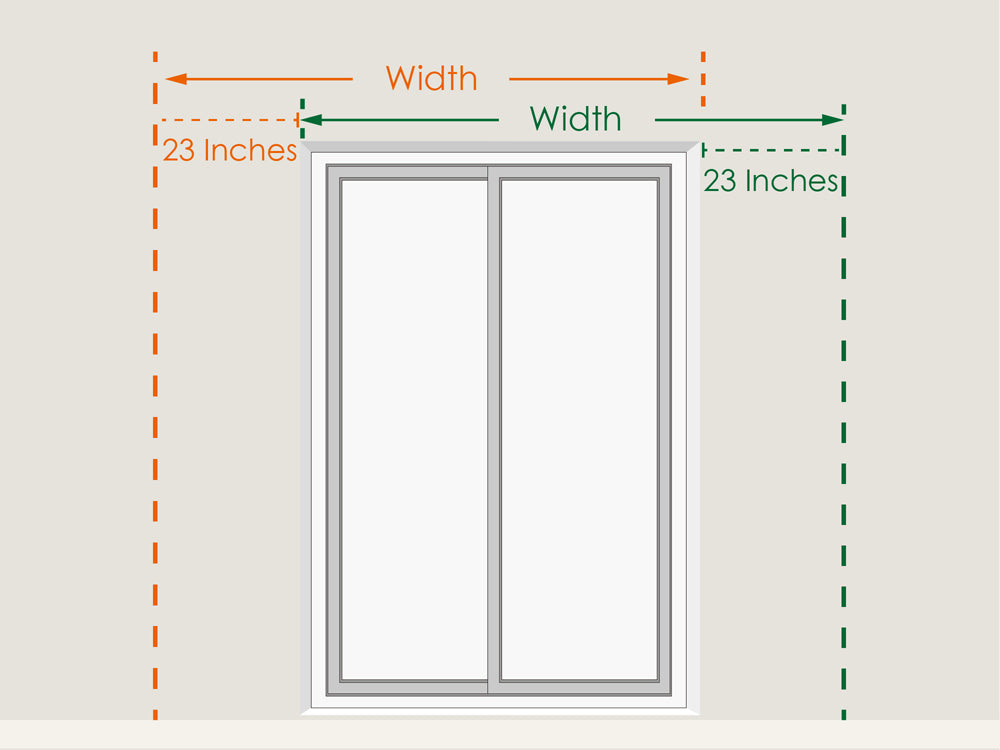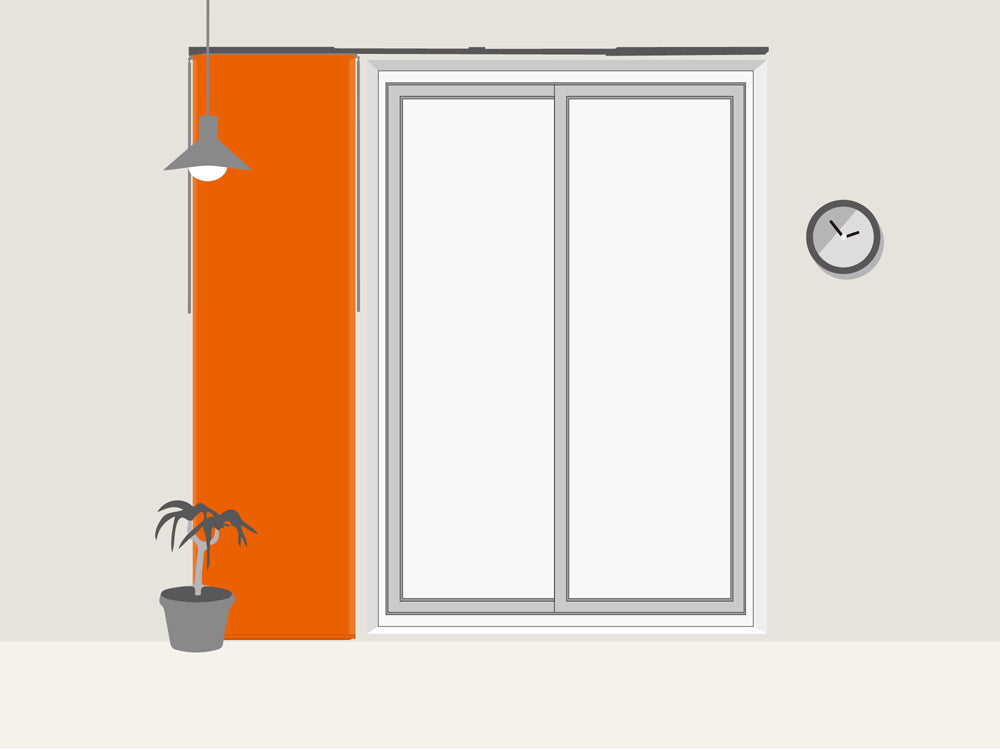How to Measure for Vertical Blinds Correctly

Vertical blinds are one of the perfect alternatives to window shades, patio door blinds, room divider, and closet door. They are suitable for minimalist look with clean lines and contemporary furnishings.
If you're planning to get a vertical blind and think the task before you is a daunting one, you are in the right place! We GoDear Design Team are here to help and guide you through the decision-making process.
Read on for the simple guide on how easy it is to correctly measure a window on your own.
Things to Consider Before Measuring for Vertical Blinds
Vertical sliding panel blinds are an interior window furnishing mounted either inside or outside your window casing. You must first decide where your blinds are going to be installed before taking accurate measurements.
First, check if there are obstructions where the blind will be installed to allow adequate mounting area. This will lead to an appropriate decision whether your blinds to go for an inside mount or an outside mount.

What is Inside Mount?
Inside mount means the blinds are installed fitly inside the top of the window casing, achieving a tidy and seamless look with clean lines without covering up the window frame or trim. However, the beams of light will leak around the edges of the blinds no matter how closely they are installed within the window frame.
When inside mounting, the most common mounting method in most situations is ceiling mount (the blind is attached to the top of the window frame, also referred to as top mount).
You need to make sure there's enough space for a proper installation of inside mounting. The minimum depth of the window frame is at least 2.5 inches for anchoring the brackets on. If your windows frame is too shallow that doesn’t have enough mounting space, then you must consider using an outside mount instead.

| Pros of Inside Mount | Cons of Inside Mount |
|
|
What is Outside Mount?
Outside mount does not mean the vertical blinds are installed outdoors. It means the blinds are installed on the outer edge of the window casing and the wall above the window.
It's a perfect solution when you don’t want to see your window frame or molding. Outside mounting blinds can cover the entire window to reduce light leakage through the sides and top. Ideal for large windows, sliding doors, or inward opening windows.

When outside mounting, they can be either mounted on the wall (wall mount) or ceiling (ceiling mount) above the windows (see image and chart below). Outside mount will be the perfect mounting method if not covering the window when opening is preferred.


If there are obstructions where the blind will be installed, like handles, cranks, molding, or inward opening window, outside mount can provide additional clearance between your wall and the blinds. If more clearance needed, installing the spacer blocks between the mounting bracket and the mounting surface is recommended.
| Pros of Outside Mount | Cons of Outside Mount |
|
|
Tools Required
The tools you will need for measuring your window.
- Steel tape measure, is generally more accurate than wooden ruler or clothing measuring tape
- Notepad and pen or pencil
- Stepladder
- Horizontal level (if needed)

Inside Mount Measurement
For mounting the blind inside the window casing, you must take 3 height and width measurements from edge to edge to make your blinds fit properly within the window frame.
Depth Requirement
Measure the depth of your window frame. 2.5 inches is the minimum depth required for inside mounting the GoDear Design vertical blinds.
Measure Height
Measure the exact height in 3 different places from the top edge of the opening to the top of the sill. Then, take down the shortest measurement as your height to make your blinds fit properly.

Measure Width
After measuring the window height, do the same for the accurate width. Measure the exact width of the window in 3 different places – across the top, the middle, and the bottom of the window. Take down the narrowest measurement as your width.

If there are tiles within your window frame, then take your width measurement between A and B.

Outside Mount Measurement
If you require your window treatments outside the window casing to cover the window entirely for the better light coverage, you must first consider whether there is any molding surrounding the window or sliding door. You can also add spacer blocks when the bracket is not deep enough to hide your molding.
Determine Track Location
First, decide where the track is going to be installed and leave at least 2.25 inches of space above the window to allow adequate mounting area. Then mark the spot.

Measure Height
Height measurement is where the finished edge of your vertical blinds are going. Measure the exact height of the window, from the top edge of the molding to the bottom edge, or to the top of the sill if there is one. Add at least 2.25 inches as your exact height.

Measure Width
Measure the exact width of the window, including the frame or molding if there is one. Add 2 inches for each side (4 inches total overlap) as your exact width to ensure privacy and light control.

If you want to open the panels without covering the window, add 23 inches on each side or only one side (depends on the layout of your home) to keep the track behind the wall.


What If Your Windows is Wider than 86 inches?
The maximum width of GoDear Design's track is 86 inches. For wider needs, we would suggest installing 2 or more sets of sliding panels. Please refer to our size chart below to estimate the number of sets you need for your large window.

Adjustable sliding track are designed to fit perfectly to your windows or sliding door. If you are still concerned about light leaking through the track at the top, building a valance over the rail track for better coverage can be a solution.
Now, you’ve got all the measurements you need. Let’s move to the next step: Install your vertical blinds!
You may also like...
Energy Efficient Window Treatments That Make Your Windows Eco-Friendly
How to Choose Vertical Blinds You Can See Through but Not In
How to Install 2 Sets of Vertical Blinds for Large Windows
Beginner's Guide to Cordless Roller Shades
Interested in our design concept? Following us on Instagram, Facebook, Twitter, and Pinterest!

